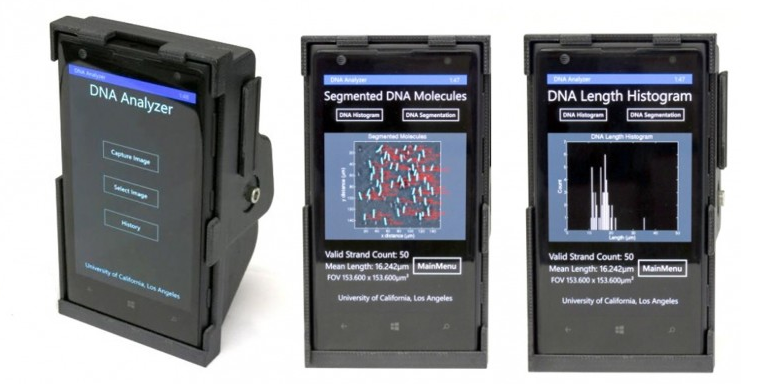 The old adage that you can do whatever you set your mind to has certainly skyrocketed to ambitious new levels lately for the collective whole. When you hear the saying as a child, it’s believable perhaps, but often as we grow older we realize it’s not possible to do whatever you want without the correct tools, and that can often be a tall—and costly—order.
The old adage that you can do whatever you set your mind to has certainly skyrocketed to ambitious new levels lately for the collective whole. When you hear the saying as a child, it’s believable perhaps, but often as we grow older we realize it’s not possible to do whatever you want without the correct tools, and that can often be a tall—and costly—order.
As human nature, imbued with both infinite curiosity and motivation, continues to march forward, we are amassing many intricate layers of new knowledge that keeps building and building, offering ever greater progress. With the advent of the internet we were closer to finding every bit of information we sought out. With 3D printing, we are now that much closer to ‘making’ every idea that comes to mind tangible, and putting those tangible concepts to very good use.
Just last week you probably had no idea that you might be able to use your phone as a microscope for finding and analyzing DNA. Taking affordable, portable diagnostics to a new level as well, might you be responsible for the next great cure?
Scientists hope to take their work to the field, maybe not for the next great cure, but at least for the next great wave of improving healthcare in developing countries and areas that are off the normal medical grid.
New on the scene is the one-of-a-kind 3D printed smartphone attachment from researchers at the University of California, Los Angeles (UCLA) that allows you to use your smartphone to perform functions only a very costly and unwieldy lab microscope would have done previously. Created by Professor Aydogan Ozca and his team at UCLA, this new innovation works with the magic—and pure science—of fluorescence.
“A single DNA molecule, once stretched, is about two nanometers in width,” said Dr. Ozcan, HHMI Chancellor Professor, UCLA. “For perspective, that makes DNA about 50,000 times thinner than a human hair. Currently, imaging single DNA molecules requires bulky, expensive optical microscopy tools, which are mostly confined to advanced laboratory settings. In comparison, the components for my device are significantly less expensive.”
Samples of DNA, single strands just two nanometers (imagine something 2,000 times smaller than a raindrop) wide, are labeled with fluorescence and then engaged with a laser. The 3D printed case encompasses:
- External lens
- Thin-film filter
- Miniature dovetail stage mount
- Laser diode
DNA is scanned and then the data is sent to the team’s lab where data can be measured and relayed to the user in just seconds. Being able to perform exercises of this kind allow traditional microscopes, planted in laboratories around the world, to help scientists diagnose diseases like Alzheimer’s and cancer.
Testing of the device is set for the field, where the team will apply the 3D printed microscope attachment to diagnosing malaria. The field is exactly where the team sees the future of this device–as well as the future of providing better healthcare in remote locations.
For more details on the device, you can check out an article published in ACS Nano.
Is a 3D printed microscope attachment something that you would find useful? How do you see this equipment helping developing countries in the long run for healthcare? Discuss in the 3D Printed Smartphone Microscope Attachment forum thread over at 3DPB.com.
Subscribe to Our Email Newsletter
Stay up-to-date on all the latest news from the 3D printing industry and receive information and offers from third party vendors.
You May Also Like
IperionX Inks 10-Year Deal with Wisconsin Manufacturer for 80 Metric Tons of Titanium Per Year
IperionX, the Charlotte-based supplier of sustainable titanium powders used for additive manufacturing (AM) and metal injection molding (MIM), has signed a ten-year deal with United Stars, a group of industrial...
Gastronology Launches Industrial Production of 3D Printed Food for Dysphagia Patients
Food 3D printing has, in many ways, been an additive manufacturing (AM) segment looking for the right business case. While some applications are beautiful and others may or may not...
Lockheed Martin Leads $3M Investment in Q5D’s Electronics 3D Printing System
Q5D, an original equipment manufacturer (OEM) of robotic arm, hybrid additive manufacturing (AM) systems used for wire harness production, has closed a $3 million investment round. The investment arm of...
3D Printing News Briefs, April 6, 2024: Depowdering, Cybertruck Door Handles, & More
In today’s 3D Printing News Briefs, ioTech’s digital manufacturing CLAD technology is opening up opportunities for microelectronics and additive manufacturing. Hexagon and Raytheon Technologies commercially released the Simufact Additive Process...
































